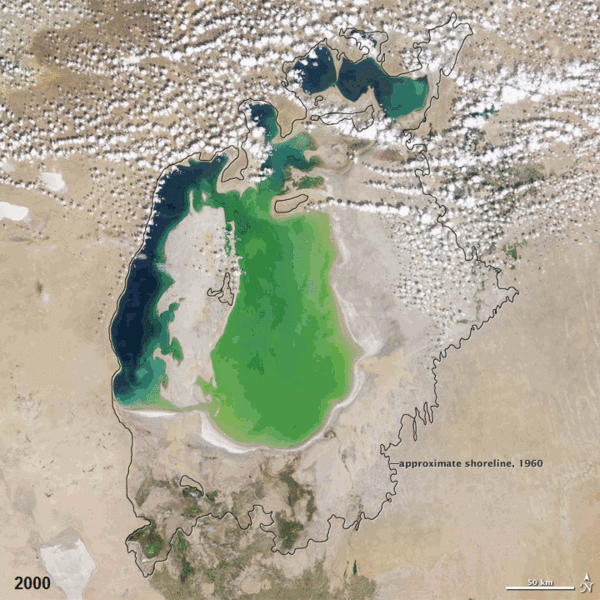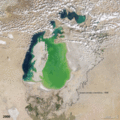Súbor:Aral sea.gif

Veľkosť tohto náhľadu: 600 × 600 pixelov. Iné rozlíšenia: 240 × 240 pixelov | 480 × 480 pixelov | 720 × 720 pixelov .
Pôvodný súbor (720 × 720 pixelov, veľkosť súboru: 3,16 MB, MIME typ: image/gif, v cykle, 12 rámcov, 12 s)
História súboru
Po kliknutí na dátum/čas uvidíte ako súbor vyzeral vtedy.
| Dátum/Čas | Náhľad | Rozmery | Používateľ | Komentár | |
|---|---|---|---|---|---|
| aktuálna | 07:38, 19. december 2011 |  | 720 × 720 (3,16 MB) | ComputerHotline | == Summary == {{Information |Description={{en|In the 1960s, the Soviet Union undertook a major water diversion project on the arid plains of Kazakhstan, Uzbekistan, and Turkmenistan. The region’s two major rivers, fed from snowmelt and precipitation in |
| 12:19, 25. december 2010 |  | 720 × 720 (2,92 MB) | ComputerHotline | == Summary == {{Information |Description={{en|In the 1960s, the Soviet Union undertook a major water diversion project on the arid plains of Kazakhstan, Uzbekistan, and Turkmenistan. The region’s two major rivers, fed from snowmelt and precipitation in |
Použitie súboru
Na tento súbor odkazuje nasledujúca stránka:
Globálne využitie súborov
Nasledovné ďalšie wiki používajú tento súbor:
- Použitie na ba.wikipedia.org
- Použitie na ca.wikipedia.org
- Použitie na en.wikibooks.org
- Použitie na es.wikipedia.org
- Použitie na et.wikipedia.org
- Použitie na eu.wikipedia.org
- Použitie na fr.wikipedia.org
- Použitie na hsb.wikipedia.org
- Použitie na kk.wikipedia.org
- Použitie na pl.wikipedia.org
- Použitie na ro.wikipedia.org
- Použitie na ru.wikipedia.org
- Použitie na ru.wikibooks.org
- Použitie na ru.wikinews.org
- Použitie na simple.wikipedia.org
- Použitie na uz.wikipedia.org



